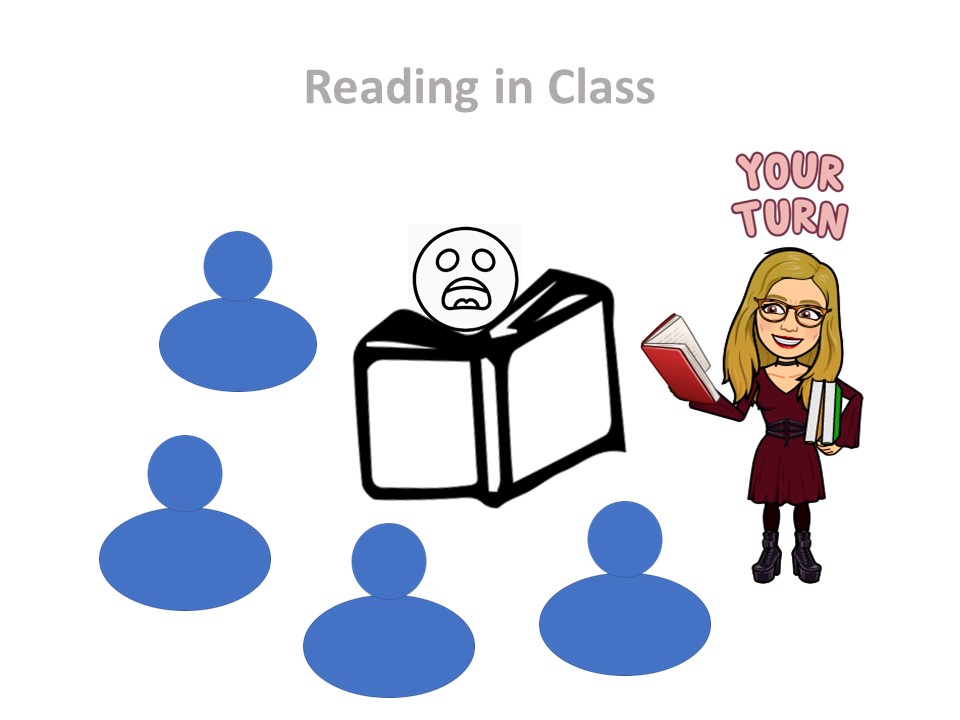After 40 years of teaching, I have retired from the classroom with many lovely memories, a few embarrassing regrets, and loads of acquired insight into what teaching is really about.
In short snippets, I am sharing some of these insights with you throughout the coming weeks. This is #8.
Reading in Class – without the Anxiety
As I have let my readers know before, I have made about all the mistakes a teacher can do in class before learning to do better. One of these mistakes was having the students read one by one, in turns, row after row, according to where they sat. Nowadays, they call it ‘Round Robin’.
Even if I clearly remembered from my own school time how I quickly learned to count when my turn would come and either practised that passage while waiting or just let my mind wander to other things, I still made my students do it.
There are humongous terrifying accounts from people who remember the horror of having to read out loud in class. This has left them with lasting anxiety towards any similar situations, like presenting oneself at a conference. Hearing of these stories banned me forever from using this method again.
However, some students enjoy reading out loud to their classmates, so I would use voluntary readers; I would start, then stop and ask who would like to continue. If we were reading a longer text, they were allowed to read as long as they wanted. If at any time nobody else wanted to continue, then I would read a passage again.
Later, I learned about some research pointing out that the one reading out loud would remember least of what was read. So much energy goes into the act of reading – especially when it is done in a foreign language – that the reader easily misses the content. So, I stopped this practice, too.
If we consider reading aloud as good language practice, there is also the aspect of using time wisely. When only one student reads, only one student gets to practice.
So I went to the other extreme and let the students all read short passages out loud at the same time. There was the sound of an incomprehensible murmur like a vast beehive in the classroom. This, however, soon seemed pointless. What was the point of reading out loud if nobody was listening?
My final solution was to let students read to each other in pairs, or in threes. This increased the time each student got to practise immensely, and it also lowered some of the anxiety that they might have felt. They could even help each other with pronunciation and understanding the text, which was totally ignored in Round Robin.

